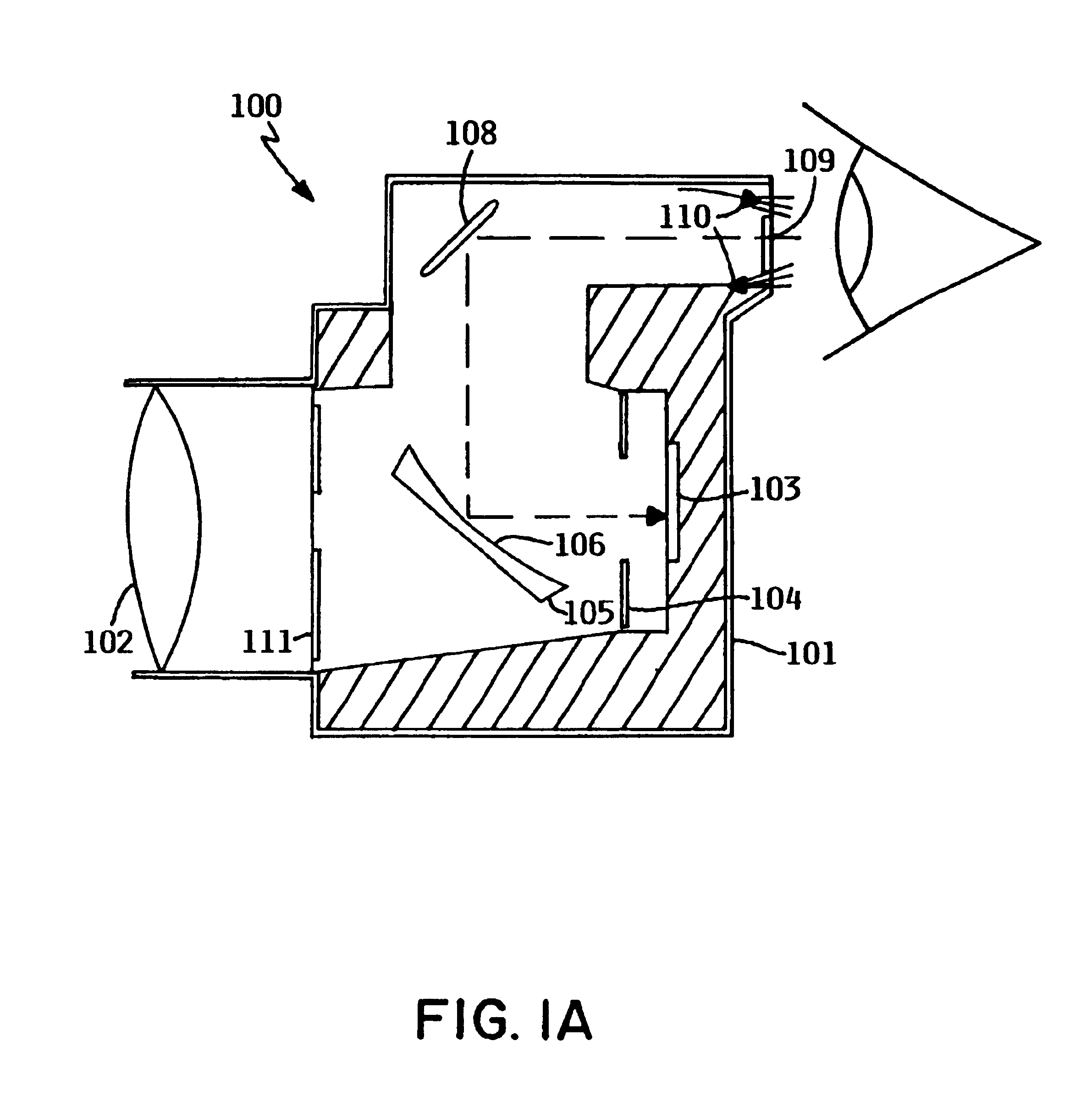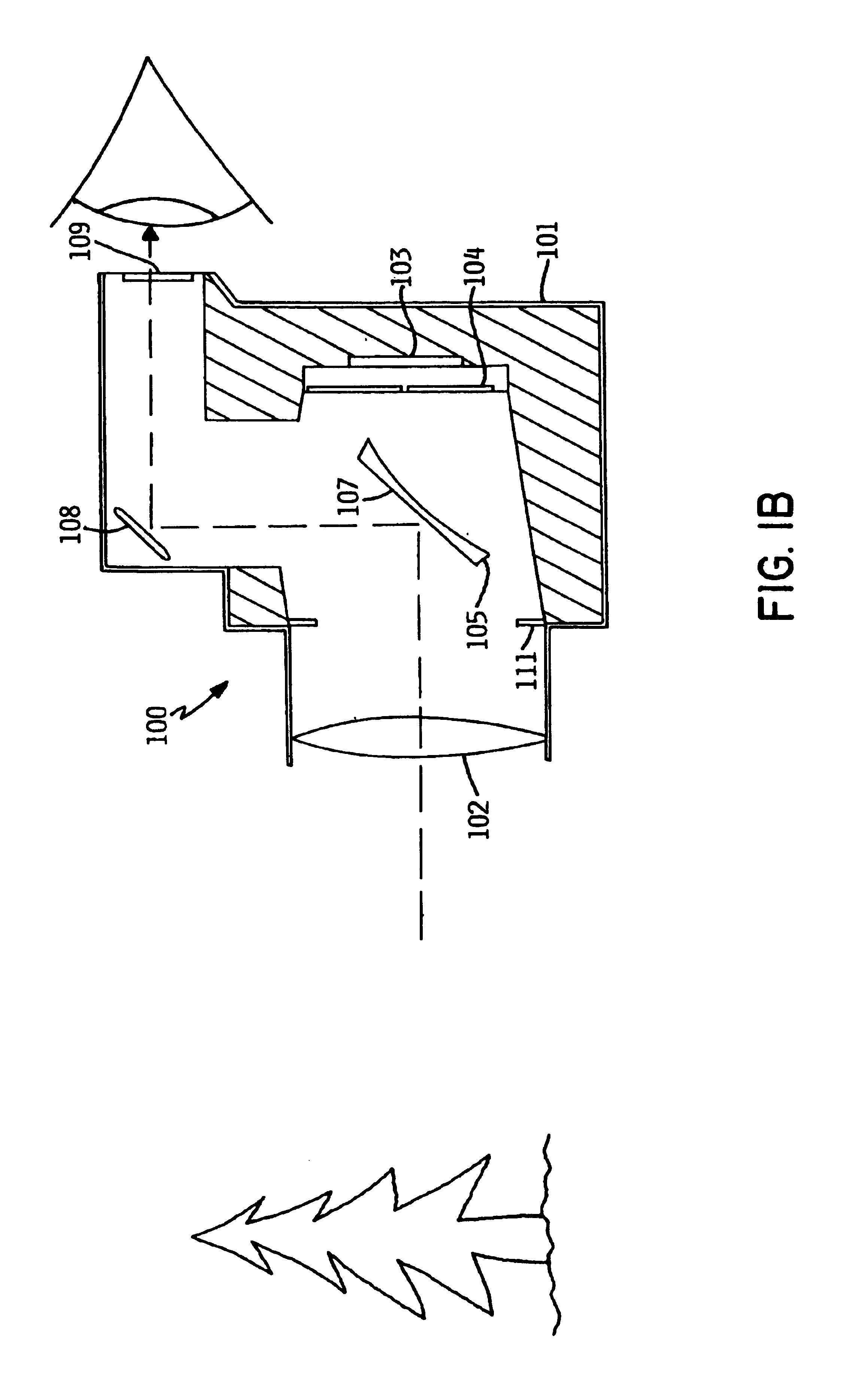Digital camera apparatus with biometric capability
a biometric and digital camera technology, applied in the field of digital cameras and motion video, can solve the problems of not being able to recognize the vast potential of the information age and being difficult to obtain, and achieve the effect of greater ease of use and greater protection
- Summary
- Abstract
- Description
- Claims
- Application Information
AI Technical Summary
Benefits of technology
Problems solved by technology
Method used
Image
Examples
first embodiment
[0022]FIGS. 1A-1C are sectional views of different operational configurations of a digital camera according to a In this embodiment, camera 100 contains a single-lens-reflex (SLR) mechanism, wherein a single lens is used for both viewing an object of interest to be photographed, and for capturing light from the object on an optical sensor array. Camera 100 includes a body or housing 101, lens 102, optical sensor array 103, shutter 104, and deflection mirror 105. FIG. 1B shows the configuration of camera 100 when the photographer is viewing the object of interest, represented as a tree, which is generally done to establish the correct setting prior to taking the photograph. In this configuration, shutter 104 is closed, and deflection mirror 105 presents surface 107 (usually a flat surface) at an angle to incoming light passing through lens 102. Light is deflected upwards, striking mirror 108, which directs it through view window 109 to the eye of the photographer. As depicted in FIG...
second embodiment
[0025]FIGS. 2A and 2B are sectional views representing different operational configurations of a digital camera according to a In this embodiment, a viewing window is separated from the image capturing portion of the camera, so that the photographer views the object of interest through a separate light path which does not pass through the photographing lens. Camera 200 comprises housing 201, lens 202, optical sensor array 203, and shutter 204. FIG. 2B shows a configuration of camera 200 during capture of a photograph. Shutter 204 is open, and light from the object of interest passes through lens 202 and registers on sensor array 203. Concurrently, the photographer may view the object of interest through a pair of viewing windows 207 and 208. During set-up of the photograph, the configuration is identical to that shown in FIG. 2B, except that shutter 204 is closed.
[0026]FIG. 2A shows a configuration of camera 200 during registration of the photographer's iris. At this time, shutter ...
third embodiment
[0027]FIG. 3 is a sectional view of a digital camera according to a In this embodiment, there is no direct light path from the object of interest to the photographer; instead, a small display within the camera regenerates the image that is sensed by the optical sensor array, for display to the photographer. As shown in FIG. 3, camera 300 contains a housing 301, lens 302, optical sensor array 303, and shutter 304. Light from an object of interest passes through lens 302, which focuses it on sensor array 303. The detection electronics within the camera then cause the image detected by sensor array 303 to be displayed on display 308, which may be a liquid crystal or other appropriate display. The photographer views this display to determine what the camera is sensing and set up the photograph.
[0028]One-way mirror glass 306 mounted at an oblique angle to display 308 permits light from display 308 to pass through glass 306 and view window 309 to the photographer's eye. View window 309 m...
PUM
 Login to View More
Login to View More Abstract
Description
Claims
Application Information
 Login to View More
Login to View More - R&D
- Intellectual Property
- Life Sciences
- Materials
- Tech Scout
- Unparalleled Data Quality
- Higher Quality Content
- 60% Fewer Hallucinations
Browse by: Latest US Patents, China's latest patents, Technical Efficacy Thesaurus, Application Domain, Technology Topic, Popular Technical Reports.
© 2025 PatSnap. All rights reserved.Legal|Privacy policy|Modern Slavery Act Transparency Statement|Sitemap|About US| Contact US: help@patsnap.com



